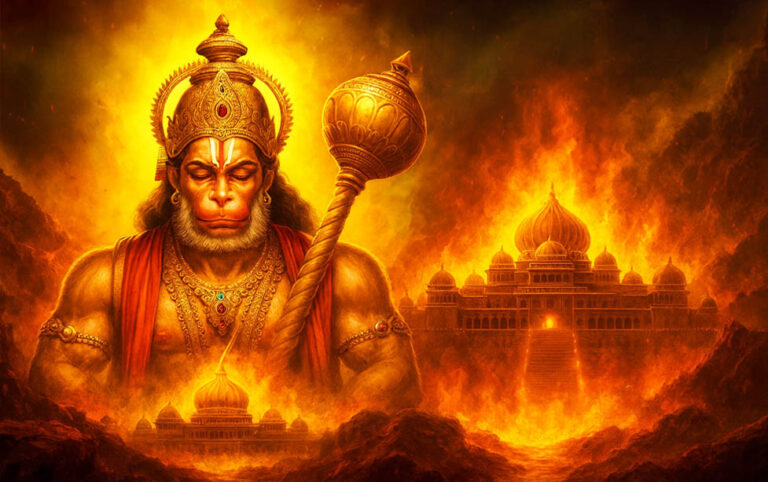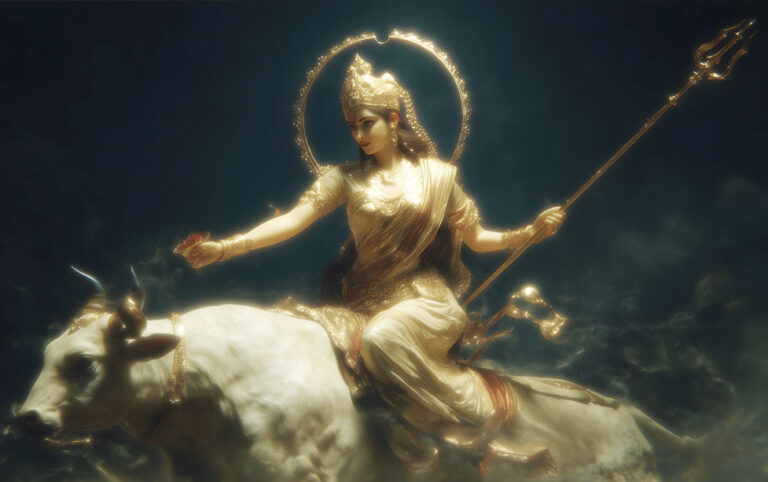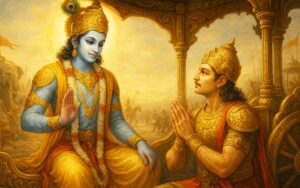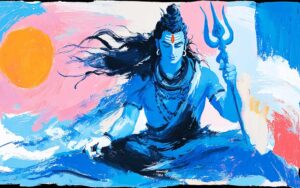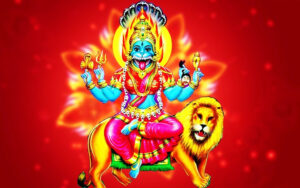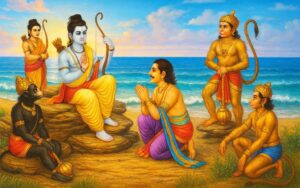
No time for reading the blog? Give it a listen on Spotify.

Discover how dispassion, not indifference, becomes true compassion—lessons from Ramayana, Mahabharata, and Puranas on mastering emotions to serve wisely.
We often mistake dispassion for coldness, detachment for indifference. But the profound wisdom of Hindu scriptures reveals a deeper truth: Being dispassionate (Vairagya) isn’t about not caring; it’s about mastering your feelings so you can care effectively.
It’s the calm eye of the storm, the steady hand guiding the ship, ensuring your energy isn’t wasted on internal turmoil but channeled towards making a real difference for those who need it.
Think about it. When we are overwhelmed by emotion – rage, crippling grief, paralyzing anxiety, or even excessive personal attachment – our thinking becomes clouded. We “over-feel” and inevitably start “over-thinking,” weaving elaborate narratives (“stories that don’t exist”) about worst-case scenarios, perceived slights, or impossible outcomes. This mental churn drains precious energy – energy that could have been directed towards understanding, solution-finding, and genuine help for others. Dispassion cuts through this fog, allowing clarity and right action.
Let’s see how our ancient epics and Puranas illuminate this vital principle:
Lord Rama in the Ramayana: Grief Controlled, Purpose Pursued
The Situation: The moment Sita is abducted by Ravana, Rama’s world collapses. His grief is immense, his anger towards the demon king is justified fury.
The Dispassion: Does Rama wallow endlessly in despair or let rage consume him blindly? No. He exhibits profound dispassion. He feels the pain deeply – he laments, he searches frantically – but he doesn’t let emotion paralyze him or distort his judgment. He quickly gathers himself.
The Right Action & Care: His controlled grief transforms into focused determination. He forms alliances (Sugriva), strategizes meticulously, and embarks on the mission to rescue Sita. His dispassionate clarity allows him to channel his immense love for Sita into effective, unwavering action. He doesn’t waste energy on useless self-pity or uncontrolled rage; he directs it entirely towards the goal of saving her. His control is the ultimate expression of his care.
Lord Krishna in the Mahabharata (Bhagavad Gita): The Ultimate Guide to Duty without Attachment
The Situation: Arjuna, on the battlefield of Kurukshetra, is overwhelmed by personal attachment (to his gurus, cousins, and elders) and debilitating grief at the prospect of fighting them. His emotions cloud his judgment, leading to inaction (paralysis through over-feeling and over-thinking).
The Dispassion: Krishna’s entire discourse in the Bhagavad Gita is a masterclass in dispassionate wisdom. He doesn’t tell Arjuna not to care about his family or the consequences. Instead, he teaches Nishkama Karma – performing one’s righteous duty (Dharma) without attachment to the fruits of action, or to personal relationships clouding judgment of what is right.
The Right Action & Care: Krishna urges Arjuna to rise above his personal sorrow and attachment. He argues that true care for society, for upholding righteousness (Dharma), demands that Arjuna act. Arjuna’s uncontrolled emotions were wasting the energy needed to restore balance and justice. Krishna’s dispassionate counsel clears Arjuna’s mind, allowing him to fulfill his duty and, ultimately, care for the greater good by fighting for a just cause.
Lord Shiva in the Puranas: The Ascetic Who Nurtures the World
The Situation: Shiva is often depicted as the supreme ascetic, immersed in deep meditation, seemingly detached from worldly affairs. He embodies Vairagya.
The Dispassion: Shiva’s detachment is not indifference. It’s freedom from the binding pull of worldly desires and transient emotions. He remains undisturbed amidst chaos (like swallowing the poison during the churning of the ocean to save the world).
The Right Action & Care: Despite his dispassionate state, Shiva is one of the most compassionate deities. He readily responds to sincere devotion (like granting boons to devotees like Markandeya). His dispassion allows him to act with perfect timing and impartiality. He doesn’t get entangled in unnecessary dramas, preserving his immense energy to intervene powerfully and compassionately when truly needed. His care flows from a place of profound inner stillness, not chaotic emotion.
The Takeaway: Clarity is the Highest Form of Compassion
The stories of Rama, Krishna, and Shiva teach us that dispassion is the foundation for effective compassion. When we master our inner storms:
We see clearly: We discern the actual need, free from the distorting lens of our own overwhelming feelings or invented narratives.
We act wisely: Our energy isn’t squandered on internal drama or reactive impulses; it’s directed towards thoughtful, appropriate action.
We care sustainably: We avoid burnout caused by emotional over-investment and useless mental churn. We preserve our energy to be present and effective for the long haul.
We make a real difference: Instead of being consumed by how we feel about a situation, we focus our resources on what the situation actually requires for the benefit of others.
True care isn’t about being swept away by the tide of emotion. It’s about standing firm in the clarity of dispassion, so you can navigate the currents wisely and reach those who truly need your strength and support.
As the Gita teaches, it’s about acting with dedication, free from the fever of desire and attachment. That is the path to making a genuine, lasting difference.
Let your care be powerful, purposeful, and clear.







